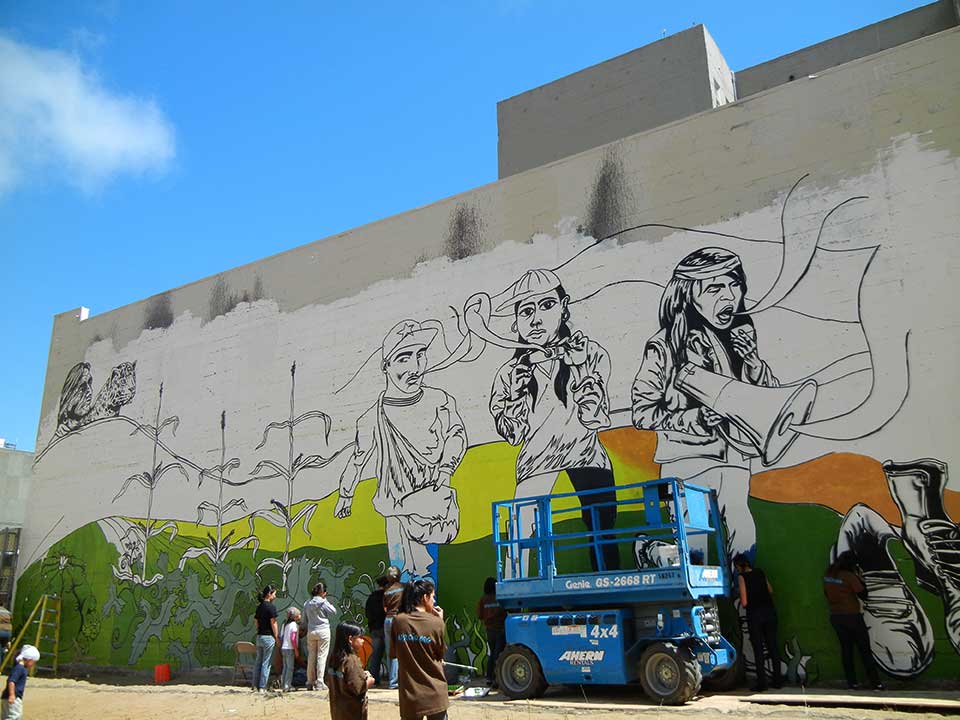Originally published on Turnstylenews.com, a digital information service surfacing emerging stories in news, entertainment, art and culture; powered by award-winning journalists.
By: Robyn Gee

The presidential campaigning has brought the debate about immigration reform into hyper focus recently. But for some, the debate is too narrow, leaving out the roughly 50% of undocumented youth who don't finish high school and therefore would not qualify for the proposed federal DREAM Act, according to Pablo Paredes, founder of the organization 67 Sueños (67 Dreams).
Paredes said that focusing on undocumented youth who graduate high school and are college or military bound leaves out 67 percent of undocumented youth.
His group, based in the Bay Area in California, is small and he works with just seven students at Oakland public schools between the ages of 15 - 18. Four of them are undocumented, and the other three come from "mixed-status" families. Their goal is to change the immigration conversation from focusing only on the exceptionally talented immigrants who "deserve" legalization, and instead acknowledge that every undocumented young person deserves a path to legalization.
Paredes and his group organized a huge public art display in San Francisco on the wall of a building in an abandoned lot and Turnstyle spoke with Paredes about the project.
Turnstyle: What does 67 Sueños stand for?
Paredes: 67 Sueños is a group that supports the radical notion that every undocumented person, whether they go to college or not, has a dream worth pursuing. We focus on youth who are not on the pathway to college, to create pathways for them to legalize.
Turnstyle: Where did the idea for the images in the mural come from? Did famous artists help?
Paredes: We gathered stories. Stories are an important way to change dialogue and legislation. We partnered with NPR's StoryCorps. They have a project that tries to tell stories of Latinos. They were very excited to tell stories of undocumented youth especially those not on the path to college.
We did 21 interviews with undocumented youth out of Oakland public high schools... Even if they have trouble in high school, they still have rights.
We thought how do we get these 21, 40-minute interviews in the news, and use them as a way to launch our work? We kicked around ideas and focused on the idea of public art. Everyone likes the idea of a mural, they don't have to pay to see it and everyone has access to it.
We listened to each interview. We sat there and picked out themes, struggles, and dreams that were most common and that captured the migrant experience in these communities. We ended up with a 15-page brainstorm of stories.
We gave this brainstorm to a very talented artist, Pancho Pescador. He rendered our vision and our brainstorm into a cohesive piece of art. The artist was also undocumented when he came to this country, so he's personally connected to the issue and he works with Oakland youth. He really understood.
Turnstyle: Describe the message of the mural.
Paredes: The tag line is "No human being is illegal, y cada uno tiene un sueño" (and each one has a dream). It's not exclusive in any way. Everyone has a dream. That's the main idea that we want to infuse in the national immigration debate.
Right now [the immigrant rights groups] are promoting an exceptionalist model, that these great outstanding students deserve it -- legalization -- and access to education, basically the right to dream.
Turnstyle: What has the response been from the community?
Paredes: Overwhelmingly positive. We invited a lot of folks involved in the immigrant rights community who hadn't heard this message before, and they were really positive. Once you lift the stories of these youth, it's easy to fall in love with them. It's easy to include them in the fight. No one was lifting those stories up, but once that happened people believed in it.
Here in the "Somar" section of the city, it's an abandoned community. The lot where the mural is was full of needles, bottles -- it's an ugly side of our country. And these young folks, they are undocumented and under-privileged, they were invited and nurtured to do something positive. It was an experiment; they transformed the space. And it was positive for the entire community, they were excited that the space was being transformed.
The products they create are not controversial. The mural is just three blocks from city hall and we want to start having that conversation with government.
Oakland is our next project. Next summer we will work on a big wall in Oakland.
Every piece of it they were involved in. The artist was oriented in mentoring youth artists so he taught them to use spray cans, brushes, shading, darkening. They put their fingerprint on every piece of the wall.